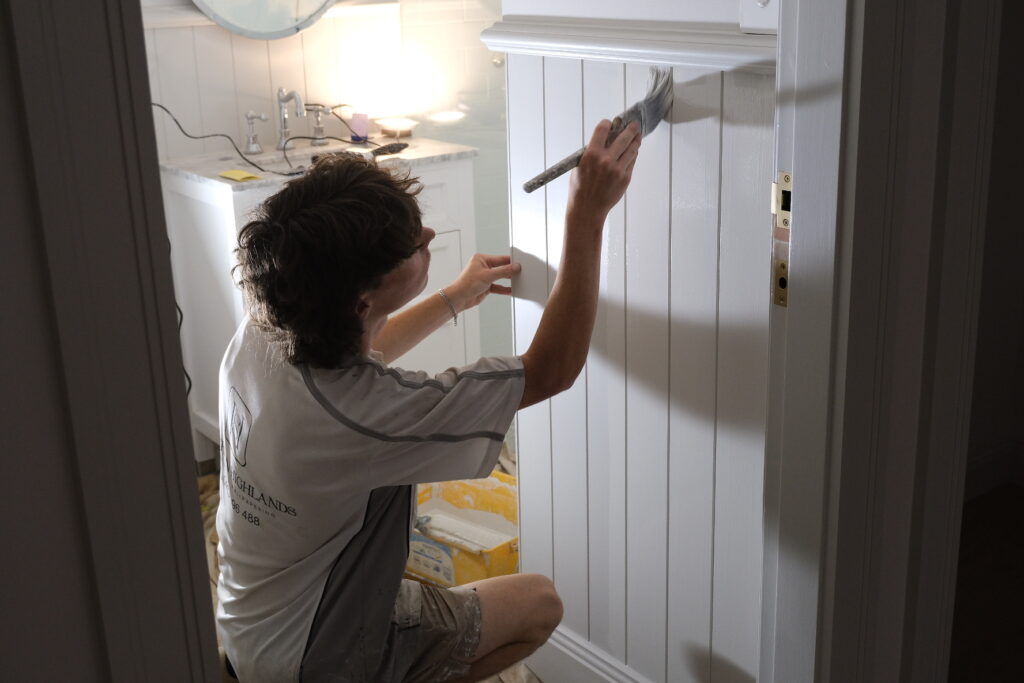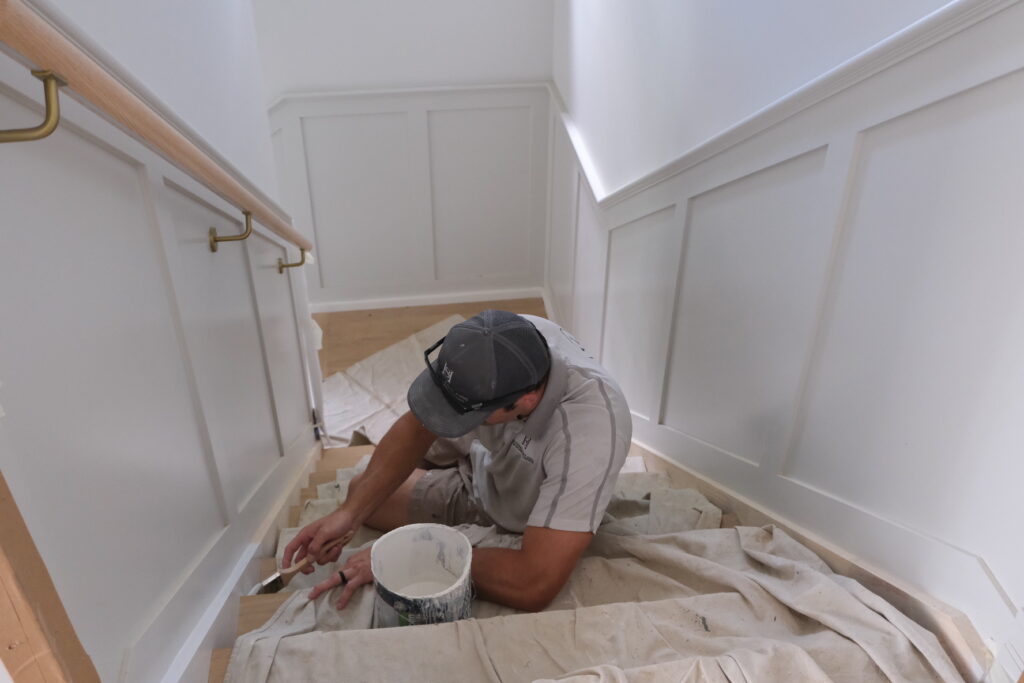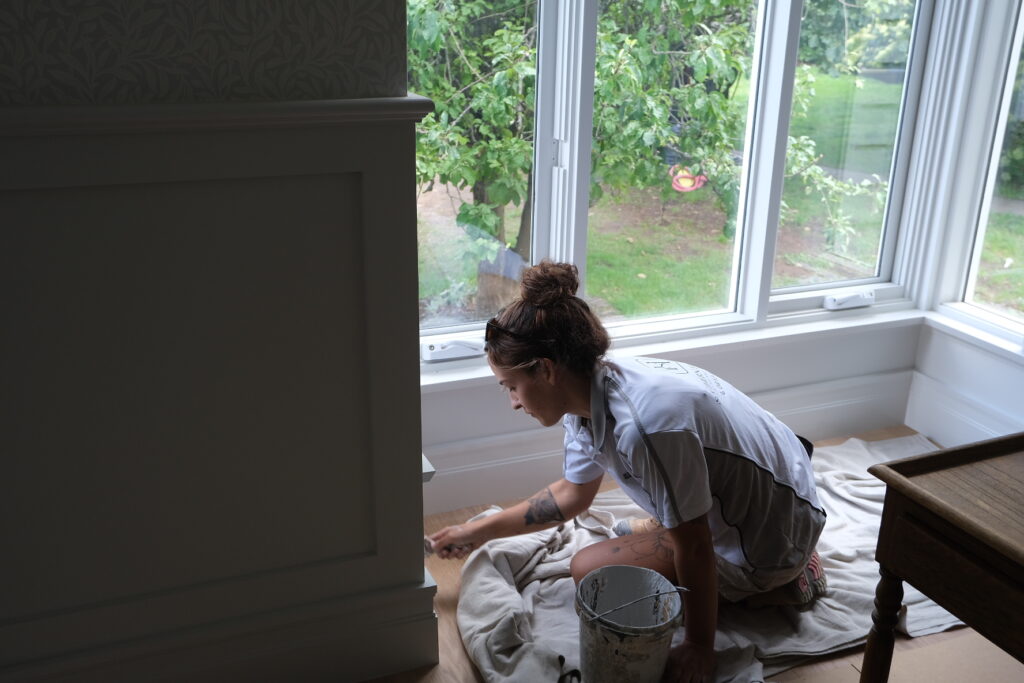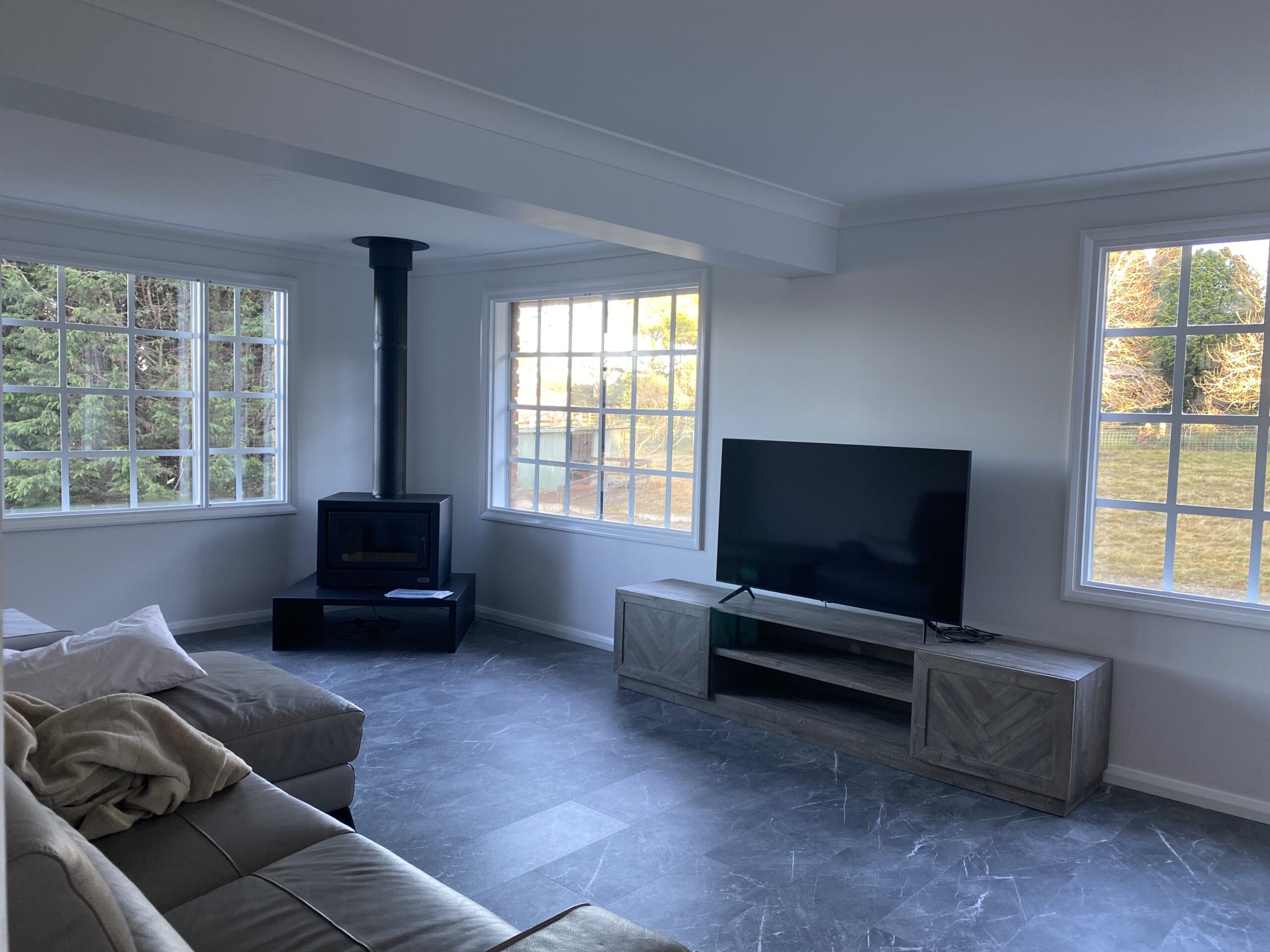Picture this: You’re ready to transform your home with a fresh coat of paint. You’ve chosen the colour, picked up what you think is enough paint, and halfway through—you run out. Suddenly, you’re left with an unfinished room or mismatched paint batches. Not ideal, right?
That’s why knowing exactly how much paint you’ll need is crucial. It prevents overspending, repeat trips to the store, or worse, a project that never gets finished. Calculating paint isn’t a guessing game—it depends on several key factors, including room size, surface type, and the number of coats required.
As trusted painters in the Southern Highlands, we know this can feel complicated. That’s why this guide walks you through everything—from simple calculations to insider tips—so you can paint with accuracy and confidence.
Key Factors That Influence Paint Usage
Before you stock up, it’s helpful to know what really determines how much paint you’ll go through. Here are the biggest factors:
1. Room Size and Total Surface Area
Bigger rooms mean more paint, but square footage alone isn’t the whole story. You’ll also need to consider:
Wall height – Taller walls equal more paint.
Ceilings – Adding ceilings into your project increases paint requirements.
Windows & doors – These reduce overall wall space that needs coating.
2. Number of Coats Required
One coat often won’t cut it. You might need more layers in cases like:
Major colour changes – Switching from dark to light (or vice versa) usually takes a primer plus multiple coats.
Damaged or uneven walls – Older or stained surfaces tend to absorb more paint.
Low-quality paint – Cheaper options often require extra coats for an even finish.
3. Type and Finish of Paint
Paint formulations cover differently:
Flat/matte paints absorb more, needing extra coats.
Satin & semi-gloss paints usually cover better, with fewer layers.
Ceiling paints are often thicker, meaning one or two coats may be enough.

4. Wall Condition and Prep Work
The state of your walls directly affects paint usage:
New plaster or drywall absorbs more paint, needing a primer coat.
Textured surfaces (like brick or render) require more paint than smooth walls.
Well-maintained painted surfaces typically need less.
By weighing these factors, you can get a much clearer picture of your actual paint needs.
Step-by-Step: How to Calculate Interior Paint Requirements
Now that you understand what affects paint usage, let’s break down how to accurately calculate how much paint to paint a house interior. Follow these simple steps:

Step 1: Measure Wall and Ceiling Areas
Work out the total square metres you’re painting:
Measure wall width × height = wall area.
Do this for each wall and add them together.
For ceilings, multiply length × width.
Example:
A room with four walls (4m wide × 2.5m high):
4m × 2.5m = 10m² per wall
10m² × 4 walls = 40m² total wall area
Ceiling: 4m × 4m = 16m²
Step 2: Subtract Doors and Windows
Remove non-paintable areas from the total:
Standard door = ~2m²
Standard window = ~1.5m²
Example:
40m² walls – (1 door = 2m² + 2 windows = 3m²) = 35m² paintable area
Step 3: Check Paint Coverage per Litre
Most paints list coverage on the tin. On average:
1L covers ~12m² per coat
For 2 coats, that’s ~6m² per litre
Example:
35m² ÷ 6m² (per litre) = 5.8 litres
Round up to 6 litres for safety.
Step 4: Make Adjustments
Textured walls? Add 10–20% more paint.
Big colour changes? Factor in another coat.
Future touch-ups? Buy an extra litre.

How to Avoid Buying Too Much or Too Little Paint
Getting the right amount of paint can save you time, money, and hassle. Here’s how to avoid overbuying or running short.
Step 1: Measure Wall and Ceiling Areas
Work out the total square metres you’re painting:
Measure wall width × height = wall area.
Do this for each wall and add them together.
For ceilings, multiply length × width.
Example:
A room with four walls (4m wide × 2.5m high):
4m × 2.5m = 10m² per wall
10m² × 4 walls = 40m² total wall area
Ceiling: 4m × 4m = 16m²
Step 2: Subtract Doors and Windows
Remove non-paintable areas from the total:
Standard door = ~2m²
Standard window = ~1.5m²
Example:
40m² walls – (1 door = 2m² + 2 windows = 3m²) = 35m² paintable area
Step 3: Check Paint Coverage per Litre
Most paints list coverage on the tin. On average:
1L covers ~12m² per coat
For 2 coats, that’s ~6m² per litre
Example:
35m² ÷ 6m² (per litre) = 5.8 litres
Round up to 6 litres for safety.
Step 4: Make Adjustments
Textured walls? Add 10–20% more paint.
Big colour changes? Factor in another coat.
Future touch-ups? Buy an extra litre.
Avoiding Paint Waste or Shortages
Here’s how to make sure you don’t overbuy—or worse, run out mid-project:
1. Plan for Touch-Ups
Purchase 10–15% extra for touch-ups.
Store leftover paint properly for future fixes.
Mix batches if using multiple tins to keep colours consistent.
2. Use a Paint Calculator
Online calculators can give quick estimates when you plug in room size, coats, and wall type.
3. Improve Paint Efficiency
Prime first – reduces absorption on dark or patchy walls.
Choose quality paint – fewer coats and longer-lasting results.
Apply evenly – thin, even layers save paint compared to heavy, uneven strokes.
By planning carefully, you can buy just the right amount of paint without waste.
Pro Tips for a Perfect Finish
Now that you know how much paint to buy and whether to DIY or hire a professional, here are some final tips to ensure a successful project.
Invest in Quality Paint
Premium paint gives better coverage, durability, and easier cleaning. Perfect for busy areas like hallways or kids’ rooms.Store Leftovers Smartly
Keep sealed cans in a cool, dry place and label them with the room name/date. No longer need it? Check for local recycling instead of tossing.Prep and Apply Correctly
Clean and patch walls before painting.
Use rollers for large spaces and brushes for edges.
Apply thin coats and allow proper drying time.
Keep the room ventilated for faster drying.
Final Thoughts
Working out how much paint you need for an interior project is a mix of simple maths and smart planning. By factoring in surface size, number of coats, and paint quality, you can budget wisely and avoid mid-project hiccups.
Whether you’re painting yourself or bringing in professionals, preparation is key to a lasting, polished finish. If you’re in the Southern Highlands and want expert guidance—or a professional team to handle it for you— contact Southern Highlands Painting and Decorating for a flawless result!

